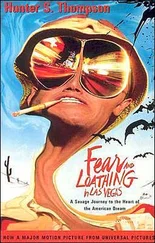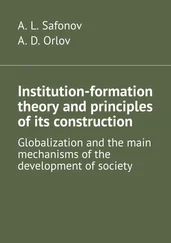1 ...6 7 8 10 11 12 ...16 In addition to the birth of the high-rise, Futurism had emerged in Europe as a pro-urban movement with utopian ideas relating to the look of the modern city, and this movement strongly influenced Art Deco, a style commonly found in the high-rise architecture of the 1920s and 1930s. Futurism emphasised the rejection of tradition and was inspired by the symbol of the machine (Tod and Wheeler 131) – a symbol that was incorporated into the arts in terms of both utopianism and dystopianism, for instance, by Fritz Lang in his 1927 film Metropolis . Futurists dismissed traditional cities and embraced the appearance and character of modern urban settlements (Tod and Wheeler 133). They felt that modern life was not represented by cathedrals or palaces anymore, and that train stations, immense streets, big hotels and glittering arcades were closer to their reality. Italian architect Antonio Sant’Elia, for instance, thought that architects needed to invent a dynamic city resembling a gigantic shipyard, with Futurist houses looking like enormous machines. He conjured up ornament-free houses of cement, glass and iron, exceptionally brutish in their mechanical simplicity. He dreamt of streets that would plunge several floors into the earth, collecting the traffic within the metropolis and connecting it to high-speed conveyor belts (Frampton 87-88).
Apart from megalomaniac, massive and oppressive building styles, as well as the threateningly utopian concepts of Futurist architects, a further modern urban characteristic that was met with criticism was the unadorned straight line that was part of the architectural utopianism of the 1920s. It was especially Swiss-French architect and urban planner Le Corbusier who promoted the straight line in his collection of essays titled Toward an Architecture (1922) – one of the most influential architectural works of the twentieth century. The author expresses the need to adapt architecture to the age of the machine, which would engender functional and mass-produced, standardised houses – machines for living in. He considers the city to be a tool for ordered modern life and for people fully adapted to industrial society, his maxim being order expressed through geometry:
Man, by reason of his very nature, practises order. [H]is actions and thoughts are dictated by the straight line and the right angle. [T]he straight line is instinctive to him and his mind apprehends it as a lofty object[ive]. [H]e walks in a straight line because he has a goal and knows where he is going. [T]he modern city lives by the straight line, inevitably; for the construction of buildings, sewers and tunnels, highways and pavements. The circulation of traffic demands the straight line: it is the proper thing for the heart of the city. The curve is ruinous, difficult and dangerous; it is a paralysing thing. The straight line enters into all human history, into all human aims into every human act. [G]eometry is the foundation [and] the material basis on which we build those symbols which represent to us perfection and the divine. (qtd. in Tod and Wheeler 138-139)
While Toward an Architecture served as a manifesto for an entire generation of architects, it was an object of loathing for many. After all, straight lines and a rigid geometry have certain totalitarian and constricting connotations. Perhaps, it can be argued, the conspicuously curvy streets of many suburbs, often ending in cul-de-sacs, are a reaction against the predominance of the straight line and grid patterns in urban planning in the United States.
These disputed developments in the urban environment were certainly not the only factors that encouraged people to seek refuge in the architecturally less overpowering suburbs, however. Economic and technological progress, such as the increasing accessibility of transportation and modern means of communication, changed the way the individual related to space, and distances began to be measured in less mathematical terms. Physical distances became less important, as they could be overcome more easily by means of technology. Hence, both negative push factors and positive pull factors were responsible for the increasing metropolitanisation and suburbanisation of the United States in the 1920s.
When it comes to the discontent regarding living conditions as well as architecture in the cities, it comes as no surprise that utopian ruralist and suburbanist concepts such as the garden suburb, the garden village, the garden enclave or the garden city began to gain popularity in America. Originally promoted and popularised in the late nineteenth century by Ebenezer Howard in his 1898 book Garden Cities of To-morrow , the garden city movement sought to reduce the alienation of the individual from nature caused by the Industrial Age in the United Kingdom. Furthermore, it was a response to the abhorrent living conditions in the country’s industrial cities, as well as to the increasing clash between urbanity and rurality. Similar to the idealised American suburb, the garden city was characterised by a merging of city and nature, by a return to a modernised Arcadia – it was, in the words of Le Corbusier, “a pre-machine-age utopia” ( Radiant City 280). In many ways, the garden city can be regarded as a self-sustaining version of the modern suburb, but it was arguably even more idealised and utopian in nature.
Strongly related to Ebenezer Howard’s utopianism is American architect Frank Lloyd Wright’s plan of Broadacre City, first presented in his book The Disappearing City (1932). Broadacre City proposed a horizontal dispersion of rural dwellings in which each family would receive a one-acre plot of land; it was “a garden suburb at continental scale, destroying virtually all sense of town” (Stern, Fishman and Tilove 941). Wright’s concept is thus an antithesis of urbanity, an apotheosis of the emerging suburban landscape of the Jazz Age, as well as an “idealistic version of what would become classic suburban sprawl […]” (Kunstler 165). Even though developed at different times and in different geographical contexts, both the garden city and Broadacre City shared the goal of mitigating the clash between city and nature, and of ameliorating urban living conditions within a quasi-suburban framework.
The Birth of the “Dream House” and the Rising Importance of Domestic Space
Owing to the process of urban flight that was encouraged through the suburban promise of a compromise between city and nature, the outer reaches of American cities began to have a greater impact on national culture in the 1920s and played a significant part in the creation of dreams of luxury. Between the end of World War I and the beginning of the Great Depression, dreams and aspirations proliferated, as the 1920s “seemed a sort of accidental pause in history, much of it remembered as if it were a willful, elegant sport of time” (Stevenson 1). In the course of the popularisation of the image of a landscape of single-family dwellings, the concept of the “dream house” was born, and owning the dream house became a primary aspiration or life achievement for the American individual. According to architectural historian John Archer, “moving to a house in suburbia is perceived as tantamount to achieving the American dream.” Archer observes that even though there is no precise definition behind the terms “dream house” or “American Dream,” there is a general understanding that they contain the idea of opportunities, and of goals that can be fulfilled: “[The twentieth-century] American dream house has been recognized for a considerable part of its history as a highly specialized instrument for realizing many aspects of bourgeois selfhood” (Archer xv). The residential suburban house became the prime bourgeois locale in America, and an essential part of the self-realisation of the individual. The dream house was and still is an instrument to shape and mirror the bourgeois self, and it is, at least to an extent, an architectural simulacrum thereof. Even though architects had been designing suburban dwellings since the early nineteenth century (Archer 229), the rising suburbanisation of the United States in the 1920s gave suburban architecture a new purpose in that it often served to realise selfhood.
Читать дальше











